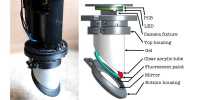One thing has been established by the Double Asteroid Redirection Test (DART): we are capable of ramming a spaceship into a rock the size of the Great Pyramid at a distance of 11 million kilometers (7 million miles). We also captured some stunning photographs of the larger asteroid Didymos as it passed by, in addition to the jumble of boulders that make up Dimorphos’ surface.
It might take days or weeks before it is known how much the impact altered Dimorphos’ orbit around its companion and, thus, what would be required to deflect potential dangers in the future. In the meantime, the video it returned offered us all a glimpse of what it feels like to speed at a lump or rock in a vehicle the size of a small car at 6.6 kilometers per second (4.1 miles per second).
The obvious question has been: how can we prevent a repeat? since scientists became sure that an asteroid was responsible for the Earth’s most recent catastrophic extinction event. We are unlikely to soon encounter a threat like the one depicted in movies like Deep Impact, Armageddon, or Don’t Look Up. However, collisions with smaller rocks happen considerably more frequently and have the potential to kill millions. Building planetary defenses against such threats is the goal of DART.
NASA Administrator Bill Nelson stated in a statement that DART “represents, at its core, an extraordinary success for planetary protection, but it is also a mission of unification with a tangible benefit for all humanity.” The international partnership “converted science fiction into science fact, revealing one strategy to defend Earth” as NASA examines the cosmos and our home planet.
We already know one thing regarding asteroid reactions. The dust produced by the impact caused Dimorphos, which was being viewed by the Virtual Telescope Project using the Klein Karoo Observatory, to brighten by about four magnitudes (40 times), before gradually fading away after about 10 minutes. Here you may watch a video of the collision as it was captured by telescopes on Earth.
For the time being, neither Didymos nor Dimorphos poses a threat to Earth. Dimorphos was chosen as a target because we were able to precisely determine how the force of the DART impact would effect it by measuring its orbit around the larger asteroid.
That remains the plan, but we must wait for ground-based observations because the probe itself is presumably now scattered throughout the surface of the asteroid and unable to take any measurements or send any messages. Weeks should pass before such results are known.
The Hera mission of the European Space Agency will travel to the Didymos/Dimorphos system in four years to investigate the consequences of the collision. It will calibrate the amount of spacecraft we would need to produce similar changes for heavier asteroids by learning the exact mass of Dimorphos.
We will be able to determine whether the so-called “kinetic impact” approach will be a suitable strategy for deflecting similar objects in the future should they dare threaten our beloved home based on how much Dimorphos’ orbit moves (ruining the planet being a job we reserve for ourselves). Instead of blowing up invaders like Bruce Willis, the plan is to detour them just enough so that they can pass safely.
















